A simple method by which you can discover with Google if a WordPress blog is virus, consists of checking the results in the search engine. Many WordPress blogs are targets of cyber attacks in order to be used to spread links to virus web pages, used for online fraud.
content
Update 2023:
How do you discover with Google if a WordPress blog is virus?
To discover if a WordPress blog is infected with viruses or malware, you can use Google and some search techniques to identify the signs of a possible infection.
Direct Search on Google through which you can see if a WordPress blog is virusat
Introduceți adresa completă a blogului WordPress în bara de căutare a Google (de exemplu, “www.your-blog-name.tld”). If the blog has been identified as being infected with malware and Google marked it as uncertain, you will see a warning in search results.
Google Search Operators – site:
Using the command “site:“, puteți restrânge căutarea doar la conținutul de pe blogul WordPress specificat. De exemplu, “site:www.your-blog-name.tld” will only return Results from the specified address. This allows you to check if the blog pages are correctly indexed by Google and notice if there are suspicious or unexpected pages.
You can make specific searches after suspicious titles. Search and identify the titles of the articles on the blog that seem suspicious, such as those with strange messages, strange links or unusual keywords. Use the command “site:www.your-blog-name.tld intitle:suspect” To search for articles with titles containing the word “suspect” to the specified blog.
Google Safe Browsing
Use the tool Google Safe Browsing To check if the WordPress blog is listed as dangerous or infected. visit Google Safe Browsing and enter the blog address in the search field.
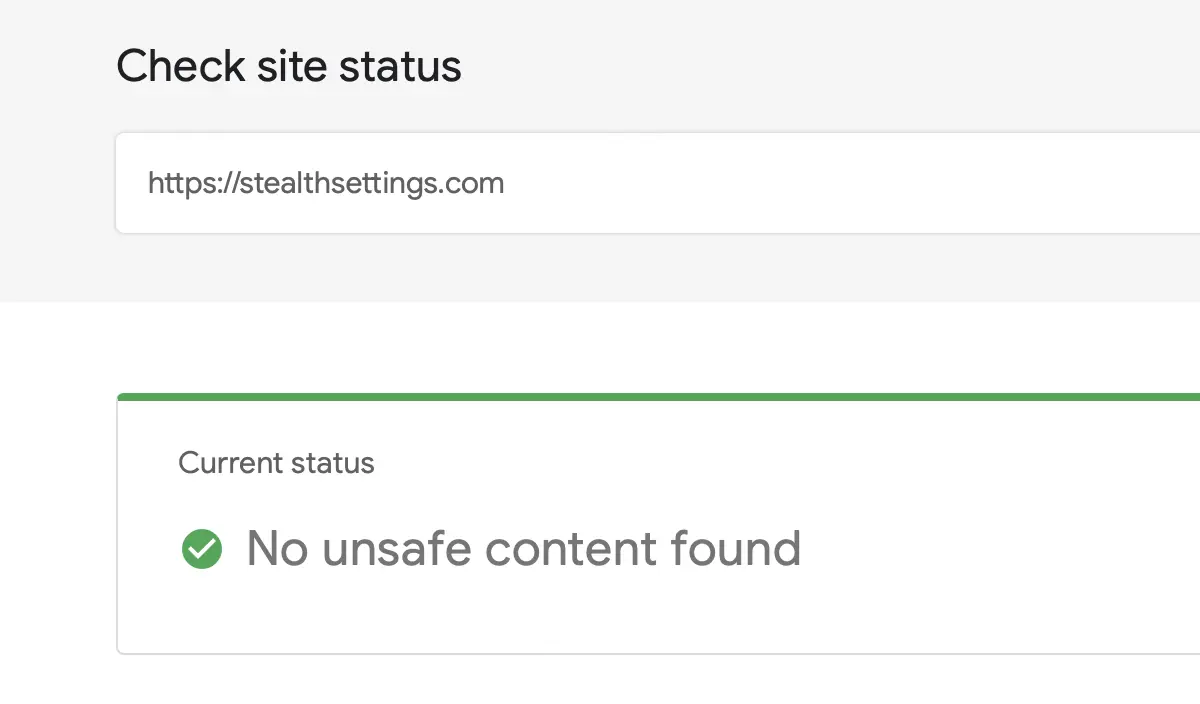
Google Search Console
Make sure your website is added to the service Google Search Console.
From this platform you will get valuable information about the presence in the search engine and any security issues.
Initial article, 2008:
Regarding my latest post, about the WordPress virus that affected I think that over 50% of blogs around the world, I try to give the simplest way you can check if a blog is affected by this virus.
I chose a random blog to make this demonstration: denisuca.com.
site:denisuca.com buy
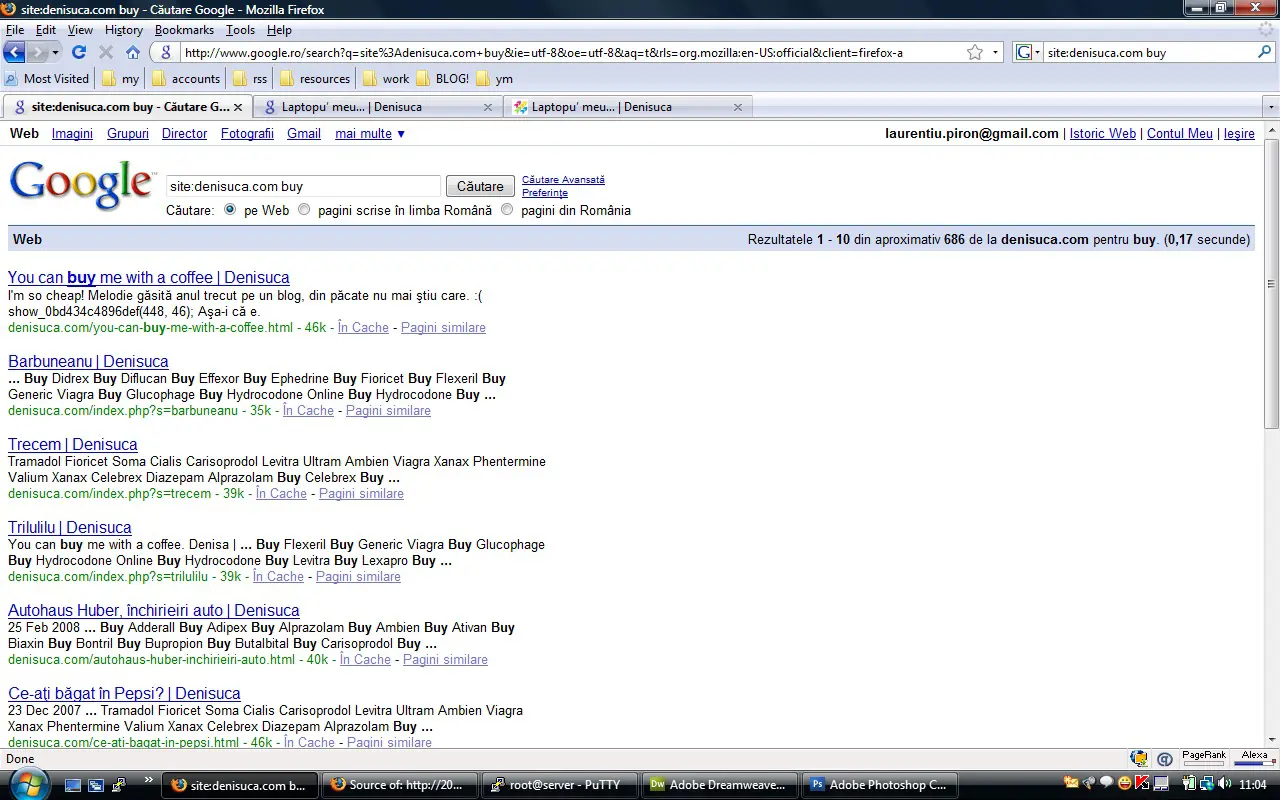
Notice in the image above that Google has indexed Denisuca.com with many keywords about some drugs. These words/links are invisible to the blog visitors and its owner, but visible for search engines: Google, Yahoo, AOL, MSN, Windows Live.
2. Check the content of the site in Cache memory Google.
For example:
Autohaus Huber, închirieiri auto | Denisuca
25 Feb 2008 ... Buy Adderall Buy Adipex Buy Alprazolam Buy Ambien Buy Ativan Buy Biaxin Buy Bontril Buy Bupropion Buy Butalbital Buy Carisoprodol Buy ...
denisuca.com/autohaus-huber-inchirieiri-auto.html - 40k - În Cache - Pagini similareClick on "in cache" and will open the site, as it was memorized by Google at a certain date.
This is the variant from the cache g o g o of the address http://denisuca.com/laptopu-meu.html as it was received on July 28, 2008 01:18:23 GMT.
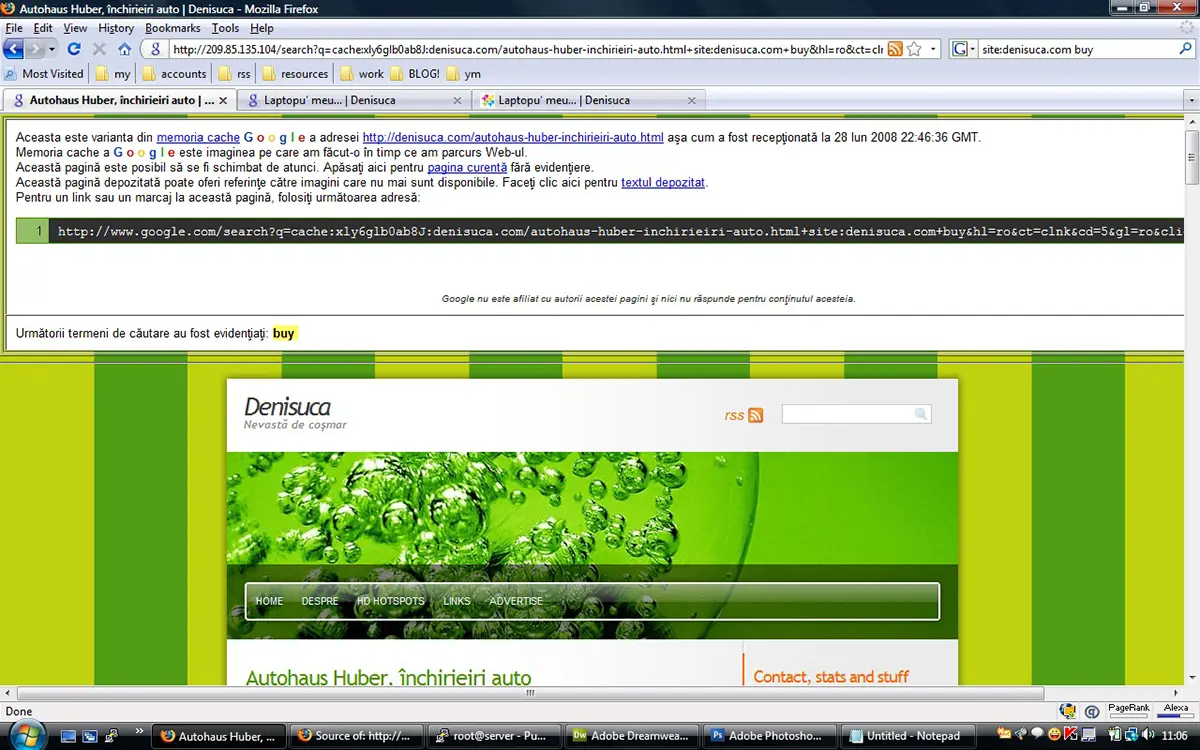
If you view the blog you will not notice anything suspicious. For now.
3. At the top of the page where is the frame Goolge Cache, click on the option that allows you to view only the text retained on the site, without pictures and other graphic files.
This stored page can provide references to images that are no longer available. Click here for the stored text.
Google Cache
Click on the link ”the stored text” .
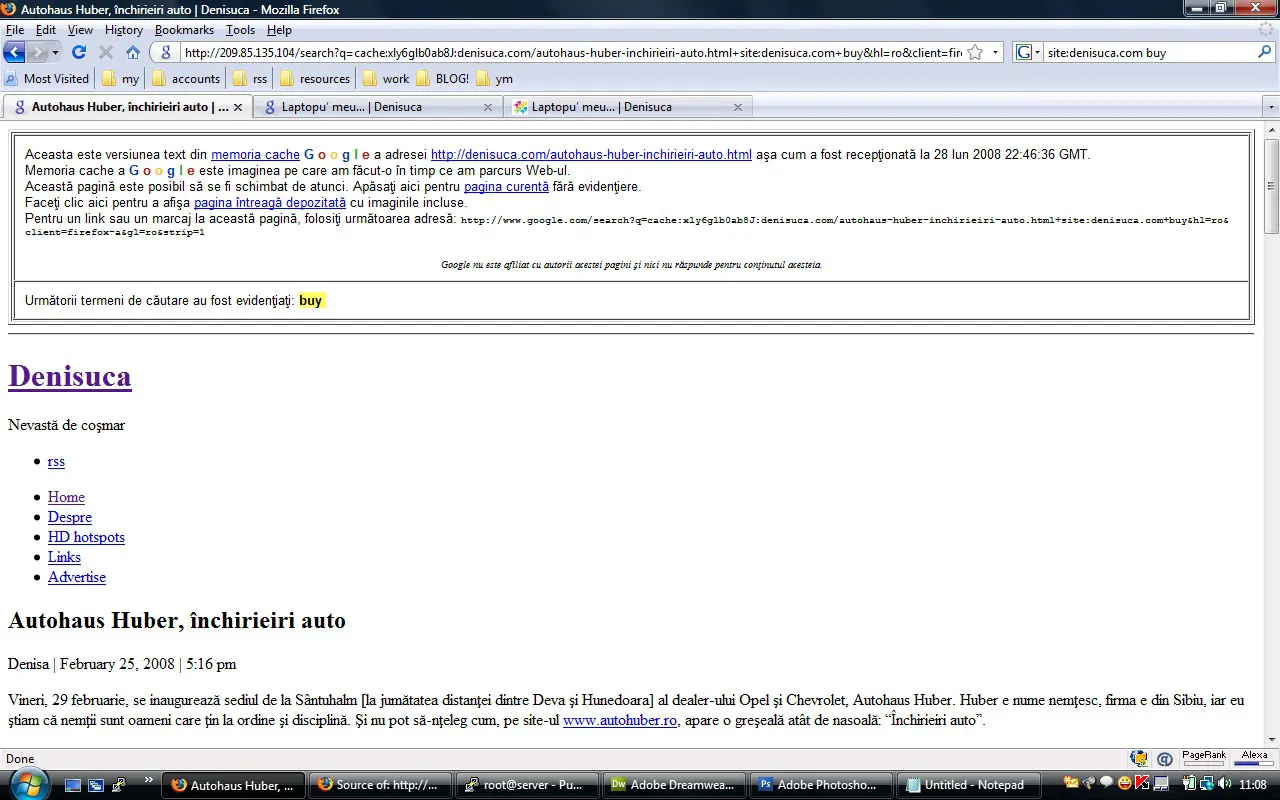
4. Scroll to the bottom of the site ”footer"And you will see there spam linkURLs Results after infection with this virus.
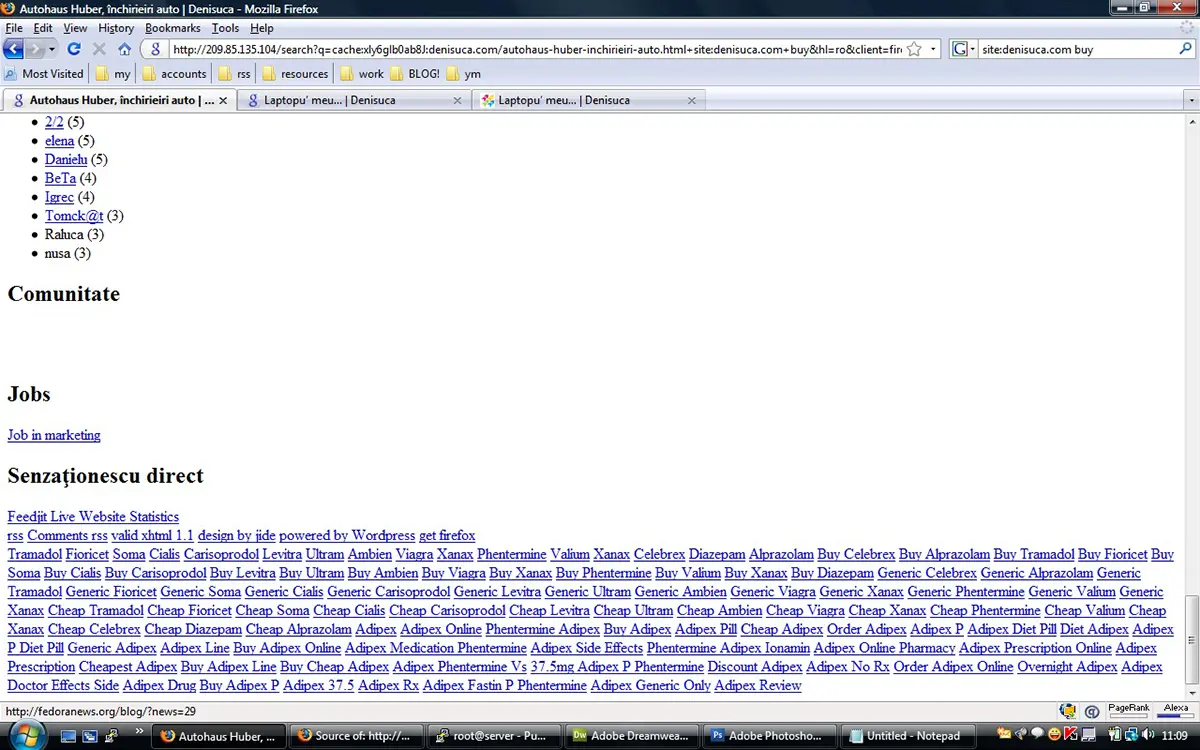
Those links are generated by a malicious code, appeared in the source of the WordPress theme used by the Denisuca.com blog and transfers Google Page Rank to the sites indicated by the attacker (backlinks). This would be the slightest damage (for some), but the effects of the virus are much larger and its structure is very complex.
The effects of a website and the presence of spam links
Search engines, over time, will no longer send visitors to such virus blogs. The insertion of hidden links in the code of a site is considered SPAM SEO, and search engines penalize this procedure.
Visitors who do not have cookies for the site are redirected by another hack of the same virus to sites of other attackers. This is identified by many antiviruses as trojan.clicker.html ... (those who come from search engines and RSS readers are also redirected).
Changes in databases and operating servers security vulnerabilities (massive performance decrease) are used to serve this offense.
Details about how you can get rid of this virus, Find here.
Related:
At: this method is effective only in the case of blogs that have infected pages, indexed in the search engine. The number of infected blogs is definitely quite large.
